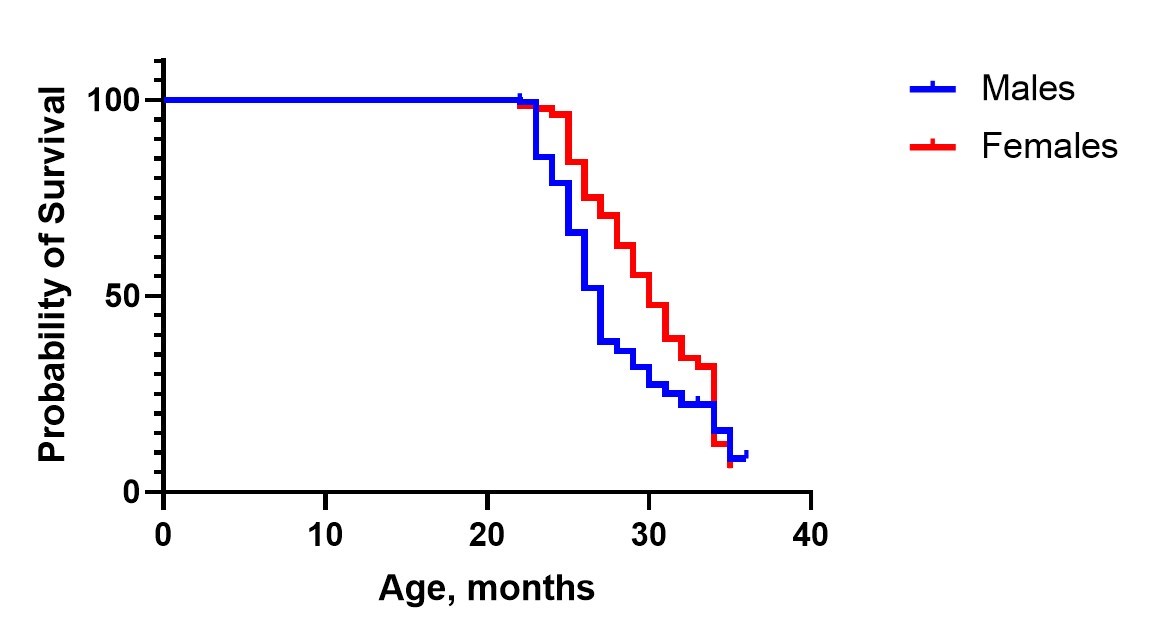Aging is a risk factor for many age-related diseases, such as type 2 diabetes, atherosclerosis, cardiovascular pathology, cancer, retinopathy, sarcopenia, etc. With the increase in human life expectancy, there is a growing interest in the development of drugs that can delay the onset and progression of aging and age-related diseases. Anti-aging drug testing is carried out on murine models of natural aging, such as C57Bl/6J, Balb/c, or CD-1 strains.
Service details: A standard study design includes:
- At least two groups of male and/or female mice (vehicle-dosed and treated with tested compound); the “young” control group(s) on the customer’s request. .
- Animals were maintained in good conventional conditions, 12-hour light/dark cycles, and free access to standardized mouse diets and acidified boiled tap water. If necessary, a modified diet is available.
- Treatment begins at the age of 2-3, 5-6, 10-12, 16-18, and 22-24 months (at the customer’s request).
- The customer offers doses and schemes of treatment.
- Animals are maintained until natural death or specified endpoint. Standard anti-aging effects are monitored by routine tests, such as mortality assessment (daily), body weight and physical condition (weekly), physical activity (quarterly or at customized time points), and gross necropsy (post-mortem).
- Specific measurements and tests, such as hematological and clinical chemistry parameters, in combination with physiological and behavioral tests and more definitive endpoints, are available for an additional cost.
- Treatment procedures include invasive (by IV, IP, SC, and PO routes), and non-invasive (food-incorporated) methods of drug administration.
A typical survival curve of C57BL/6J female mice treated with metformin (M), aspirin (A), and both compounds (AM):

